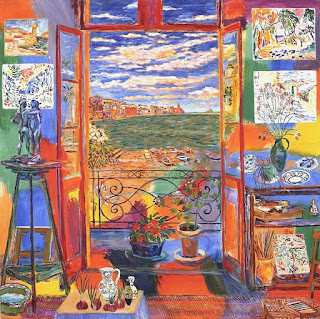
When the colors an artist uses are not based on what he/she sees but chosen arbitrarily. The term implies that it has no meaning but it may have a symbolic meaning or emotional meaning.
In the painting above Matisse is using arbitrary color. The color does not try to match what is actually seen. The color is being used as a compositional element to balance the composition. The color creates rhythm and balance.
Look at the just the blue areas. The blue is placed in patches as the red and yellow are. If you follow the blue around the canvas it seems to simulate how our eye jumps around a scene stitching together our experience.








